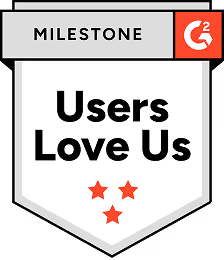Examining The Importance of Removing Bias in Software

But unfortunately, that’s not the case. Just last month, Google apologized for an error in its automatic image labeling software that labeled a hand-held thermometer as a “gun” when held by a dark-skinned person.
Software naturally has human bias, thanks to the humans who created it. To stay with the Google example, its 2020 annual report on diversity showed that only 2.4% of its technical workforce is Black.
These software biases, when left unaddressed, can have real and lasting consequences in both perpetuating racial and gender stereotypes and alienating core audiences. Join us on an exploration of bias in software today, including the need to resolve it and what Regie.ai is doing to remove natural biases built into our software.
The Spectrum of Bias in the Modern Software Environment
For the purposes of this guide, let’s define software bias as inequities that, however subconsciously, get built into modern business and consumer-facing platforms.
Software bias can be subtle, through language like “grandfathered in” that doesn’t consider the loaded history of the term going back to the 19th century, when it narrowly described states’ rights to prevent descendants of people who were enslaved from voting. This type of language can be understandably offensive to African Americans still fighting for equal rights and voting rights today.
At the same time, bias can also be more drastic. Consider, for example, Amazon’s promising AI recruitment tool that had to be scrapped because it taught itself that because male candidates were more prevalent in technology roles, they were to receive more favorable feedback. Candidates who identified as women were categorically downgraded.
As these two examples show, two sources tend to be responsible for software bias:
- The people who build and oversee software creation might not reflect the audience for which the platform is built. The technology industry has a well-documented diversity problem, with racial and gender minorities not adequately represented.
- The data from which the software draws, especially in AI applications, may be biased. The Amazon and Google examples mentioned above both drew on scientific and objective data. But by taking the current environment as status quo rather than an opportunity for improvement, the AI perpetuated and worsened the status quo.
These two sources are not entirely separable, either. Data is at its best with human oversight, allowing for the correction of mistakes like the ones above. But when that oversight comes from non-representative segments of the population, it is unlikely to be successful. The bias continues to perpetuate the software, ultimately resulting in potentially significant problems for all involved.
The Central Importance of Removing and Minimizing Software Bias in Sales
Software bias is real, and it is everywhere. Consider the sales environment.
According to a 2019 report by the U.S. Bureau of Labor Statistics, 78% of sales teams and 84% of sales managers are white. Managing software to improve sales performance will naturally overlook any biases directed towards underrepresented groups not included in the process. From software creation to usage by sales teams, biases continue to exist, ultimately harming efforts on two fronts:
- Diverse members of the sales team are disadvantaged because they have to manage software that might use language offensive to them. Efforts to diversify the team become more difficult as a
- Sales prospect audiences who are affected by the software in multiple ways, become less likely to engage and convert, harming both business reputation and revenue. For example, the software’s algorithm may subtly discriminate against underrepresented group by labeling them less likely to purchase, or the email templates may use language that perpetuates even subtle biases.
Again, software bias is dependent on both the developers and the oversight in its use. Leaving AI or language assumptions based solely on data unchecked can become a significant problem over time. Data-informed decision-making with human input, rather than data-only decision-making that risks these biases, plays a crucial role in minimizing that bias.
Positive Effects of Minimizing Software Biases
On the other hand, a conscious effort to remove and minimize software bias can have significant positive effects, as well. The same disadvantaged communities now have fewer roadblocks to engage with the software and outputs it provides, making them more likely to value and build goodwill towards the software and its provider.
Take software platforms like Regie as an example. Our core value proposition revolves around helping sales teams become more successful. In this environment, bias in our platform can impact revenue flows on a number of levels, both in addressing more diverse sales teams and when language addressed at target audiences contains negatively charged language and processes.
So we’re taking a conscious effort to make a change. A comprehensive effort is underway to scrub Regie of all racial and gender bias, with the goal of becoming the first platform in the space to truly offer a bias-free sales enablement solution.
This type of emphasis has the potential to create a tangible advantage for the software’s users at all levels. The ability to deliver unbiased software solutions that treat all segments with equal levels of respect can result in significant goodwill, ultimately improving both sales team productivity and company revenues.
How Less Biased Technology Can Help the Software Industry Evolve
Opportunity naturally results from hurdles to overcome, and the same thing is true on this topic, as well. While software bias is a significant problem even in its most subtle appearances, the technology industry is slowly beginning to recognize it as such and moving to a more inclusive, less discriminatory alternative.
In a 2020 study by Columbia University, researchers found that more diverse engineering teams have begun to play a significant role in removing software bias. As an article covering the study last December concluded.
The coauthors believe their work could serve as an important stepping stone toward identifying and addressing the causes of AI bias in the wild. “Questions about algorithmic bias are often framed as theoretical computer science problems.
However, productionized algorithms are developed by humans, working inside organizations, who are subject to training, persuasion, culture, incentives, and implementation frictions,” they wrote. “An empirical, field experimental approach is also useful for evaluating practical policy solutions.”
Beyond diversity in development teams, even basic audits of existing software solutions can uncover some of the more subtle issues, as well. Tools like DEI.ai, for instance, are able to automatically detect examples of biased language in teams’ communications and platforms. The tool is then able to explain why the term might be problematic, and suggests alternative terms that demonstrate respect, empathy, and understanding.
A Natural Goal Point of Software Development
As more developers begin to understand and address issues of bias, we are moving towards a point where the software creation process will reach a natural end point of its evolution. Naturally based in data for anything from the setup process itself to algorithmic equation, the human input that we have identified in this article as so crucial to the removal of biases will begin to play a more prominent role.
The result: an evolution of software development and optimization that is equally dependent on data and human inputs. Rather than leaning too heavily into one or the other direction, platforms built on the interplay of both variables will have the greatest potential to succeed and satisfy all segments of their audience.
Studies show again and again that an increase in diversity for both software development teams and strategic goals ultimately encourages more creativity, more productivity, and more profitability. Removing biases is both a cause and an effect of this emphasis, resulting in better software that ultimately produces better outcomes at all levels.
Making a Lack of Bias a Central Consideration When Choosing Software
Ultimately, bias in software is little more than a blind spot. In the vast majority of cases, it’s not an intentional oversight. Rather, it subtly slips into processes during both software development and platform optimization, with negative effects not always obvious enough to be detected or corrected easily.
The prevalence of that problem has created significant problems for any business looking to use a software platform. These problems also present opportunities. The best way for businesses across industries to prevent these negative side effects: choosing platforms that make a conscious effort to minimize and remove bias from their solutions, language, and code.
We’re moving towards a software industry more aware of, and therefore more likely to fix, of the fact that gender and racial biases naturally exist even within data and coding. Until then, though, building your business and sales operations on software making a conscious effort to move in that direction can provide you with the advantages you need to stand out in a positive light.
Your teams will benefit but most importantly, your current and prospective customers will benefit as well. Are you looking to learn more about regie and the ways we are addressing subconscious favoritism and discrimination in our own platform? Let’s talk. Contact us today.
FAQs
Read more posts
View all BlogsNeed more help?
If you still have questions, make sure to check out our Help Center: there, you'll find all the tips & advice you'll need to get your team up & running with Regie.ai.









